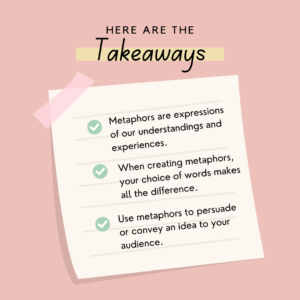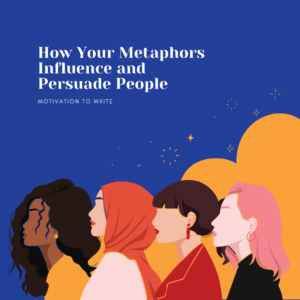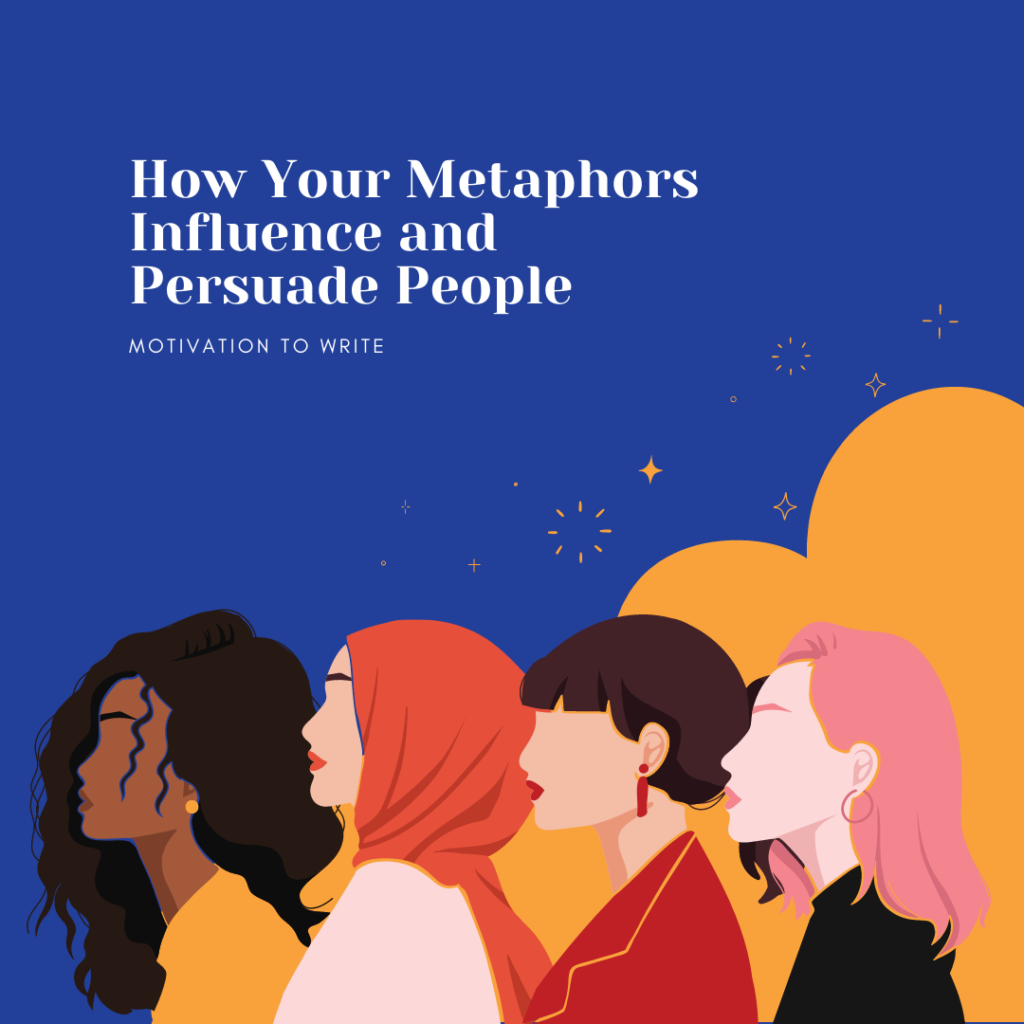Have you ever metaphor you didn’t like? (I kind of stole that from a book title.) I’ve never metaphor I didn’t like. Even the bad ones I find interesting because metaphors provide insight into how a writer or narrator thinks and feels about a topic.
In their book, Metaphors We Live By, George Lakoff and Mark Johnson say, “The essence of metaphor is understanding and experiencing one kind of thing in terms of another.” So the metaphors we choose to describe a person, place, or thing reflect how we understand and experience it.
I’ll take it one step further. As writers, we can use metaphors to persuade and influence how we want our audience to think or feel about a topic. Consider the following examples taken from Metaphors We Live By:
- He shot down all my arguments.
- What she said left a bad taste in my mouth.
- I’ll take my chances.
In the first example, the argument is war. In the second, what she said is food. And in the third, life is a gambling game.
Imagine if the first sentence read, “He refuted all my arguments.” Not only has the tone and imagery changed, but the implied meaning has changed. The argument is no longer war; it is simply an argument.
Let’s look at a passage from Herman Melville’s short story, “Bartleby the Scrivener.” Notice how the narrator describes Bartelby:
“At first, Bartleby did an extraordinary quantity of writing. As if long famishing for something to copy, he seemed to gorge himself on my documents. There was no pause for digestion.”
In this metaphor, work is food. And Bartleby is starving. We feel as though he needs this job to survive. 
Here’s one more example from Horace Miner’s satirical essay, “The Body Ritual of the Nacirema:”
The focal point of the shrine is a box or chest which is built into the wall. In this chest are kept the many charms and magical potions without which no native believes he could live. These preparations are secured from a variety of specialized practitioners. The most powerful of these are the medicine men, whose assistance must be rewarded with substantial gifts.
If you’re confused, don’t worry. I was, too, when I first read this essay. Miner is satirizing American’s (Nacirema is American spelled backward) self-absorption and vanity. He describes this vanity to outsiders who look upon our obsessive “body rituals” as strange yet amusing. He uses metaphors so that his curious readers understand and vicariously experience the ways of the Nacirema.
In the above passage, the bathroom is a “shrine” chockfull of “charms and magical potions” (pills, lotions, soaps, and creams) on which we depend for our survival. The “specialized practitioners” are doctors who prescribe to us these magical solutions.
Miner’s use of metaphors is meant to persuade his readers to see American culture as utterly ridiculous.
So, here are the takeaways:
- Metaphors are expressions of our understandings and experiences.
- When creating metaphors, your choice of words makes all the difference. Clearly understand the concept you’re comparing your topic to, and use words directly related to that idea.
- Use metaphors to persuade or convey an idea to your audience. Be clear about your intention. What do you want them to do, think, or feel upon reading your metaphors?
Cited Works:
Lakoff, George, and Mark Johnson. Metaphors We Live By. 1st ed., University of Chicago Press, 2003.
Melville, Herman. Bartleby, The Scrivener A Story of Wall-Street. SMK Books, 2012.
Suggested Works:
Here’s where you can subscribe, find, or follow me:




